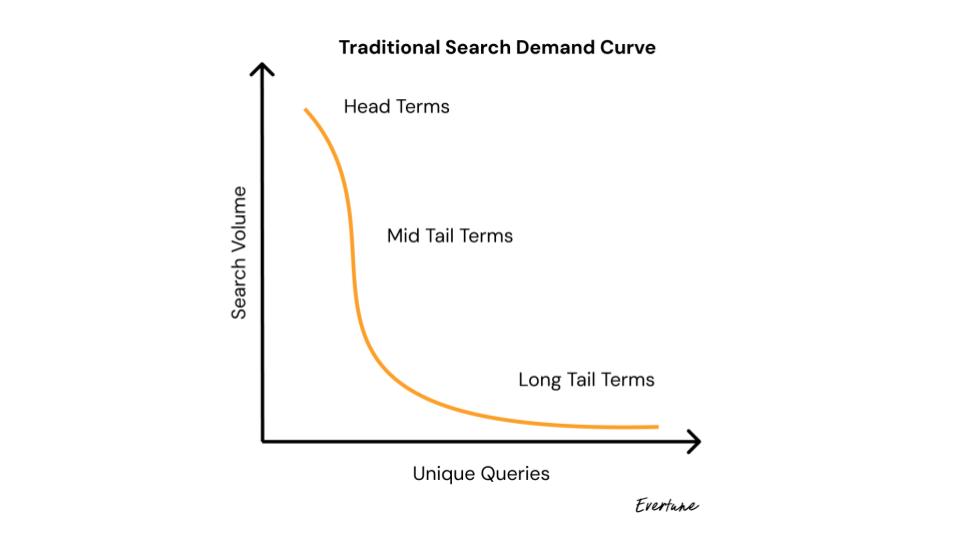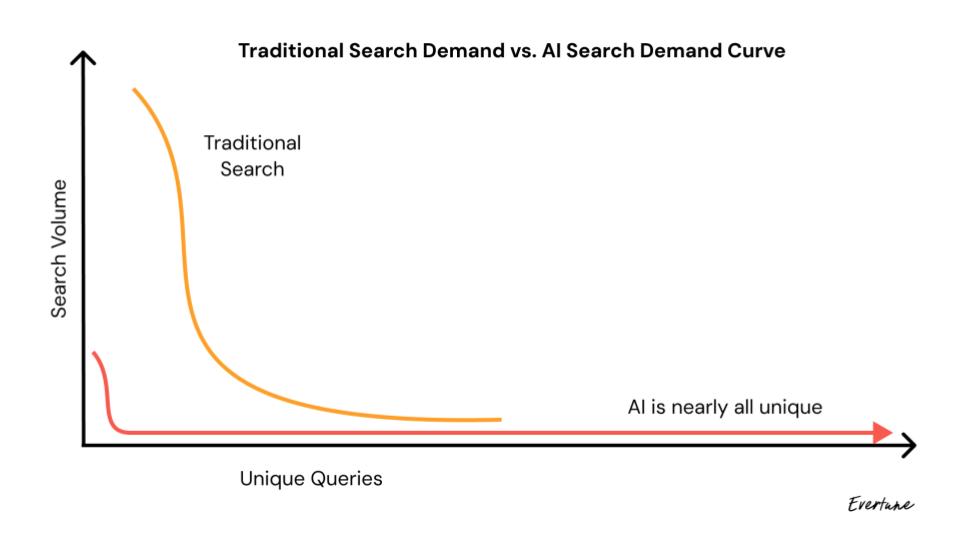One of the most important paradigm shifts that marketers need to think through in the move from traditional search to AI is how people interact with the technology.
In traditional search, people generally use short queries, like “amazon” or “nike” to navigate to a site or “credit card”, “flights to NYC” or “luxury SUV” if researching a category. Indeed, recent analysis from Semrush suggests the average is 3.4 words. This means that different users often use the same queries in Google. The traditional search demand curve looks like:

However, in AI the user behavior is very different as people “prompt” or said another way - they ask AI questions vs. enter keywords into a search box. This means queries in AI are:
- More unique: Our EverPanel sees that over 80% of queries are unique, i.e. never seen more than once, vs. search which is 15%. This will likely change over time but even in Google’s early days unique queries were only 25%.
- A lot longer: Our EverPanel data tells us people use a median of 19 words per prompt with the average being close to 100 words. This means that every prompt is long tail as people enter sentences and paragraphs - not short keywords.
Sources: Traditional Search - Google, AI - Evertune’s EverPanel
So let’s plot AI prompt volumes on top of our search demand curve:

You can see:
- All the volume is in the long tail - the head is dramatically smaller and the tail much longer
- The volume per query is = 1 most of the time
What does this mean for marketers entering the AI Era?
For marketers stepping into the world of AI, the biggest takeaway is this: traditional keyword strategies don’t translate well into AI-driven environments. In AI, every interaction is a conversation, not a search. People aren’t typing “running shoes”—they’re asking, “What are the best lightweight running shoes for wide feet that are good for marathon training?” This means optimizing for high-volume keywords simply doesn’t work.
Instead, focus on creating content around broader topics that can inform, support, and guide these conversational journeys. Think about what your ideal customer might ask an AI assistant, and build content that helps answer those questions with depth and clarity. In this new landscape, success won’t come from chasing individual prompts—it will come from becoming the go-to resource on a topic that AI trusts to pull from when responding to its users.





